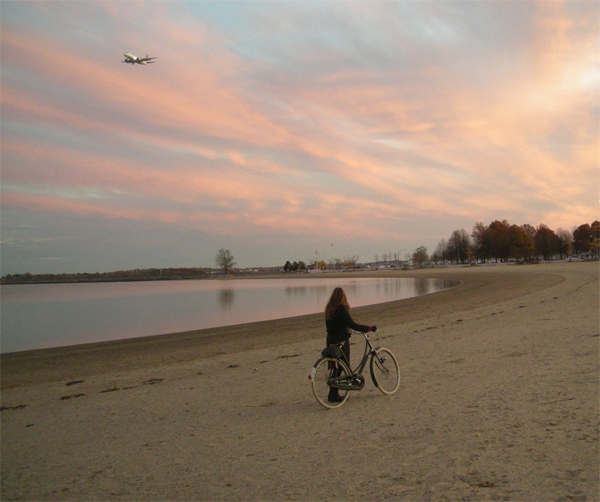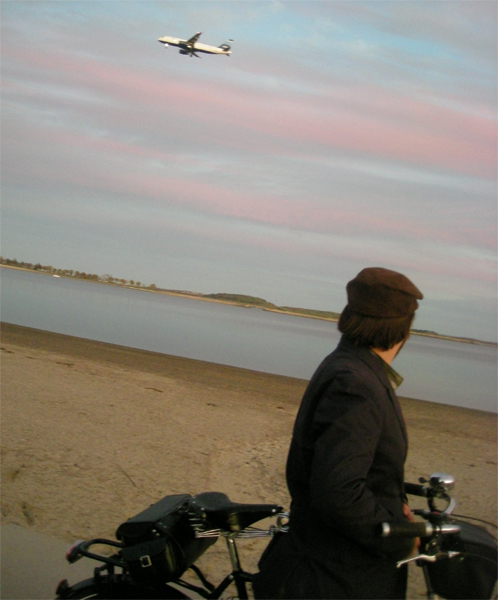By Angus M. Thuermer Jr., Jackson Hole, Wyo.March 21, The route two skiers chose during an excursion near Ranger Peak on March 7
was a key factor in them getting caught and killed in an avalanche, park rangers
said Tuesday.
Steve Romeo and Chris Onufer died after being swept nearly 3,000 vertical
feet. The two likely were headed to an unskied south-facing couloir above
Waterfalls Canyon in Grand Teton National Park that Romeo had eyed over the
years, rangers and a friend of Romeo’s said.
Romeo and Onufer’s ascending ski tracks led to that goal, rangers who
investigated the avalanche deaths said. The route they chose took them from the
edge of an avalanche path into its starting zone, which was the ideal steepness
for slides, rangers said.
“They chose to go up a known avalanche path ascending into an avalanche
starting zone,” Jenny Lake Ranger Rich Baerwald said.
The incident should spur backcountry skiers to learn about avalanches and
reassess the way they make decisions about taking risks, he said. Skilled skiers
and moderate danger can be a deadly combination, rangers said.
Many people who read Romeo’s popular TetonAT ski blog looked to him “as the
subject-matter expert,” Ranger Chris Harder said.
While Romeo skied radical terrain with elan, he also posted several videos
and wrote stories about getting caught in or nearly missed by avalanches.
“I don’t know if he was taking that to heart,” Harder said. “He had more
[encounters] in the last few years than I’ve had in my lifetime,” the 30-year
Teton veteran said.
“I feel pretty strongly a lot can be learned by this,” Harder said.
Neither skier told anybody of his exact plans, rangers believe.
“What their ultimate objective for the day was, we will never know,” Harder
said.
Piecing together information from the ascent track and from friends Romeo and
Onufer talked to before leaving, investigators put together a likely scenario
for the accident.
Romeo and his sometimes ski partner Reed Finlay had talked about skiing a
couloir west of the avalanche path — on a spur of 10,355-foot Ranger Peak.
“It’s a really nice line, a pencil-thin, straight shot.” Finlay said Tuesday.
He and Romeo last saw it together Feb. 4 while on Eagles Rest Peak.
Finlay couldn’t return to the area. His wife, Rebecca, gave birth to
firstborn Kershaw on Feb. 29.
The ill-fated skiers were scheduled to depart Colter Bay at 7 a.m., rangers
said. Across the lake, the slope the two ascended was “a big avalanche path,”
Baerwald said.
“It narrows down from a big basin to gullies chutes and rock bands — it’s
hourglass-shaped,” Baerwald said.
Climbing the avalanche path with skins on their skis, Romeo and Onufer
initially made the best of hostile country, Baerewald said.
They stuck to the climber’s right, near where cliffs form the edge of the
slope.
At an elevation of about 9,700 feet, they made a critical decision.
“They start making their way away from the edge of the avalanche path on into
the avalanche track and into the starting zone,” Baerwald said.
Added Harder, “If they were heading to that [pencil-thin] couloir, they
probably short-cut over to it.”
An alternative would have been to continue up the right side of the slope,
rangers said. This route was less steep and led to a ridge.
“The ridge would have been a safer route,” Baerwald said. Ridge safety is a
basic concept, he said.
“The message with regard to route-finding is, it’s super important terrain be
considered,” he said.
A rising traverse and switchback brought the pair to a slot between two
triangle-shaped cliffs in the middle of the basin. Here the slope steepened to
about 40 degrees, the classic angle for slab avalanches, rangers said.
It is likely this is where the two triggered the slide. The crown, up to 3
feet deep, indicated the avalanche entrained snow that had been falling and
drifting from five days of storms. In that period, 28 inches fell in parts of
the Tetons, the Bridger-Teton National Forest Avalanche Center reported.
Significant wind carried that snowfall to lee slopes, rangers said, including
the fateful basin on Ranger Peak’s spur. Southeast facing, its orientation
catches drifting snow carried by prevailing winds, they said.
Once the skiers provoked the slide, nothing could have saved them, rangers
said. The avalanche ran a linear mile over cliffs and rocks.
It likely
propelled them at speeds between 60 and 80 mph, rangers said. It ripped off one
skier’s pack, another’s boot, all four skis.
Searchers found the base layers of one ski ripped from its top plate, its
climbing skin still attached.
“The ski was completely delaminated, separated,” Harder said. “Speaking to
force, that says a lot right there.”
The chaos likely tore Romeo’s helmet off his pack, and it “sustained a lot of
damage,” Harder said.
Romeo had an Avalung pack — a device designed to allow avalanche victims to
breathe if buried. Its mouthpiece was deployed, but rangers couldn’t tell
whether he had it gripped in his teeth during the slide, they said.
Friends of the two have asked whether avalanche airbags could have saved
them, rangers said. Airbags are stowed in backpacks and deploy instantly with
the pull of a toggle. They help suspend a skier high in flowing snow and help
prevent burial.
But neither skier was really buried, rangers said.
“Chris probably could have sat up,” had he been alert or alive, Harder said.
“Steve probably could have wrestled an arm out.
The Teton County Coroner ruled the cause of death was blunt-force trauma.
Buffalo Fork Sub-District Ranger Rick Guerrieri said no gear could have
helped.
“One piece of equipment wasn’t going to have any effect on injuries,” he
said.
Added Harder, “The best tool they had with them, they weren’t using the most.
That was their brain.”
Rangers discounted other skiers’ sentiments about the pair being in “the
wrong place at the wrong time.” Such phrases are best reserved for victims of
meteorite strikes, they said.
“This [event] had factors in it that [include] decision-making,” Harder said
of the avalanche. Rangers are uncertain to what extent the pair took into
account the snow and winds.
Avalanche forecasts from the center called the chance of a slide moderate.
The predictions range only to 10,500 feet.
Search leader Guerrieri would not call the pair’s decisions a mistake.
“Different people are willing to accept different levels of risk,” he said.
“I hate second-guessing people.”
Backcountry travelers need to ask themselves what the consequences of taking
a risk might be, Harder said. In this instance, had the avalanche been witnessed
from across the lake and a rescue mounted within 10 minutes, the outcome would
have been the same.
“They died instantly, it’s pretty safe to say,” he said.
Even with working cellphones and helicopters at the ready, an injured skier
would be lucky to get from the Tetons to a hospital within three hours, Harder
said.
Decision-making is an increasing part of avalanche education, Baerwald said.
A study widely cited in recent years indicates that skiers and snowboarders
discard caution in the face of social considerations that range from the lure of
untracked slopes to a commitment to reach a goal or even familiarity with a
slope.
“Taking an avalanche course is critical, even late in the season,” Baerwald
said. Education can help skiers understand what an avalanche forecast means and
provide other lessons, he said.
“There was some decision making that factored into the accident,” Baerwald
said. “Route choice — that’s the one that stands out the most.”
Post script by the editor @ Cold Thistle:
This statement from the article above should stand out to everyone imo:
“I don’t know if he was taking that to heart,” Harder said. “He had more [encounters] in the last few years than I’ve had in my lifetime,” the 30-year Teton veteran said.In my 40 years of back country,area skiing and winter alpinism the VAST majority of friends I have lost had been in avalanches previousand then eventually died in avalanches.
It is NOT a numbers game. It is a choice you make every time you venture into avi terrain. Start disregarding your fear and you will make the wrong decisions.
None of myfriends were total back country snowdummies. All knew the risks we take. But all made fatal errors...usually more than once and only survivedthe first few incidents because of pure, dumbluck. Harsh? Sure it is. But easier to tell you now than remind you at your own funeral.
How many funerals do youneed to attend before the point is drivenhome?
Snow safety is not rocket science.
The next time you ski or walk into dangerous terrain ask yourself, "is it reallyworth the risk today?""Overs" in this game are hard to come by. Gear will never replace the high tech shit between your ears. Everyone has the same gear there but you have to be willing to actually use it.
Double click to enlarge the terrainphotos of the accident area below.


 For now, here are some more gratuitous shots from our velo-travels. Appropriately, on our last trip we watched the airplanes land on Castle Island in South Boston.
For now, here are some more gratuitous shots from our velo-travels. Appropriately, on our last trip we watched the airplanes land on Castle Island in South Boston. If you click to enlarge this picture, you can see the cluster of tiny white lights in the distance - the airplanes waiting their turn.
If you click to enlarge this picture, you can see the cluster of tiny white lights in the distance - the airplanes waiting their turn. And there one goes - landing right over the water.
And there one goes - landing right over the water. People say that cycling feels like flying. Well, maybe if you are the airplane, but certainly not if you are sitting in one. I would rather cycle than fly any day.
People say that cycling feels like flying. Well, maybe if you are the airplane, but certainly not if you are sitting in one. I would rather cycle than fly any day. See you soon!
See you soon!




















 And then there is that not so obedient part again...where she runs into the water and drinks it...and gets sick from it. Leaving messes that Nathan has to clean up. She knows she is in trouble:
And then there is that not so obedient part again...where she runs into the water and drinks it...and gets sick from it. Leaving messes that Nathan has to clean up. She knows she is in trouble:
 Ok, enough about the dog. Because although I love this dog, it is pretty ridiculous when I have two blog posts about her this week and none of the kids!
Ok, enough about the dog. Because although I love this dog, it is pretty ridiculous when I have two blog posts about her this week and none of the kids!